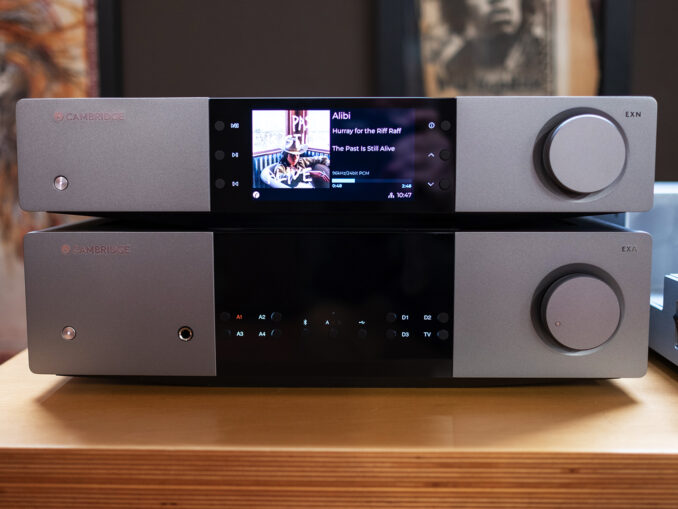
I admit that I checked the price of the Cambridge EX stack numerous times throughout the review period.
While I knew I knew, I had to check and double check and so on because I had the feeling it cost more than $3998 for the pair. Sure, $4k isn’t chump change when buying stuff like bacon and gasoline or paying rent but when it comes to hifi, four thousand dollars might not even buy you the latest greatest Audiophile Ethernet switch.
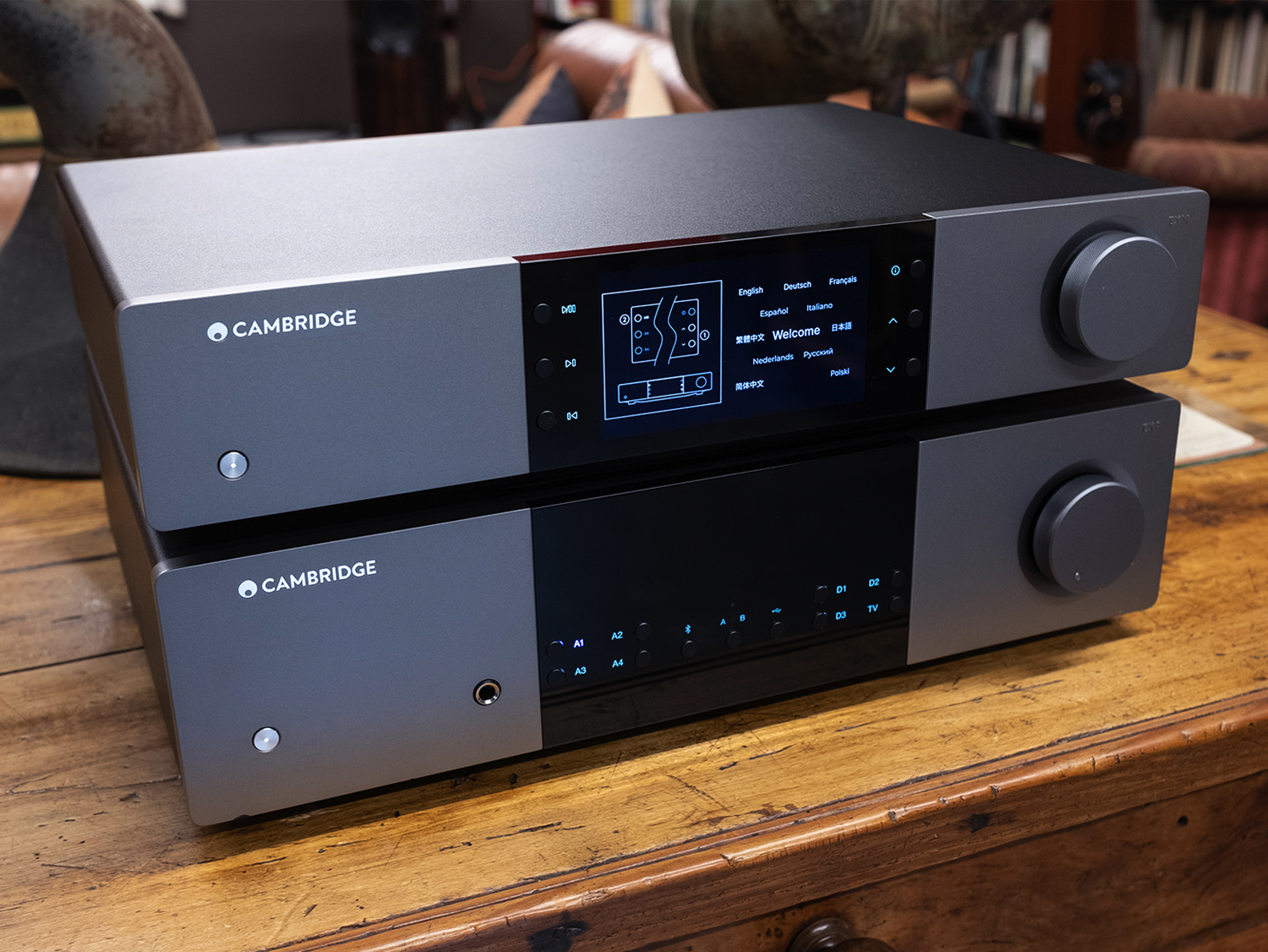
Something similar happened when I reviewed the Cambridge Edge A Integrated Amp (review) that comes in at an even $5999 about which I said:
When fully focused in on listening to music mode, there was nothing lacking with the Edge A’s way with music.
The new EXA100 integrated amp incorporates some trickle-down tech from the Edge series with its 100 Watts per channel of Class AB power built around the same amplifier modules and power transistors as found in the Edge M mono power amps which I also reviewed along with the Edge NQ Preamp/Network Player (review) and said:
If you take price into account, this level of design, build quality, and performance makes the Cambridge Edge stack a screaming bargain.
A theme is developing.
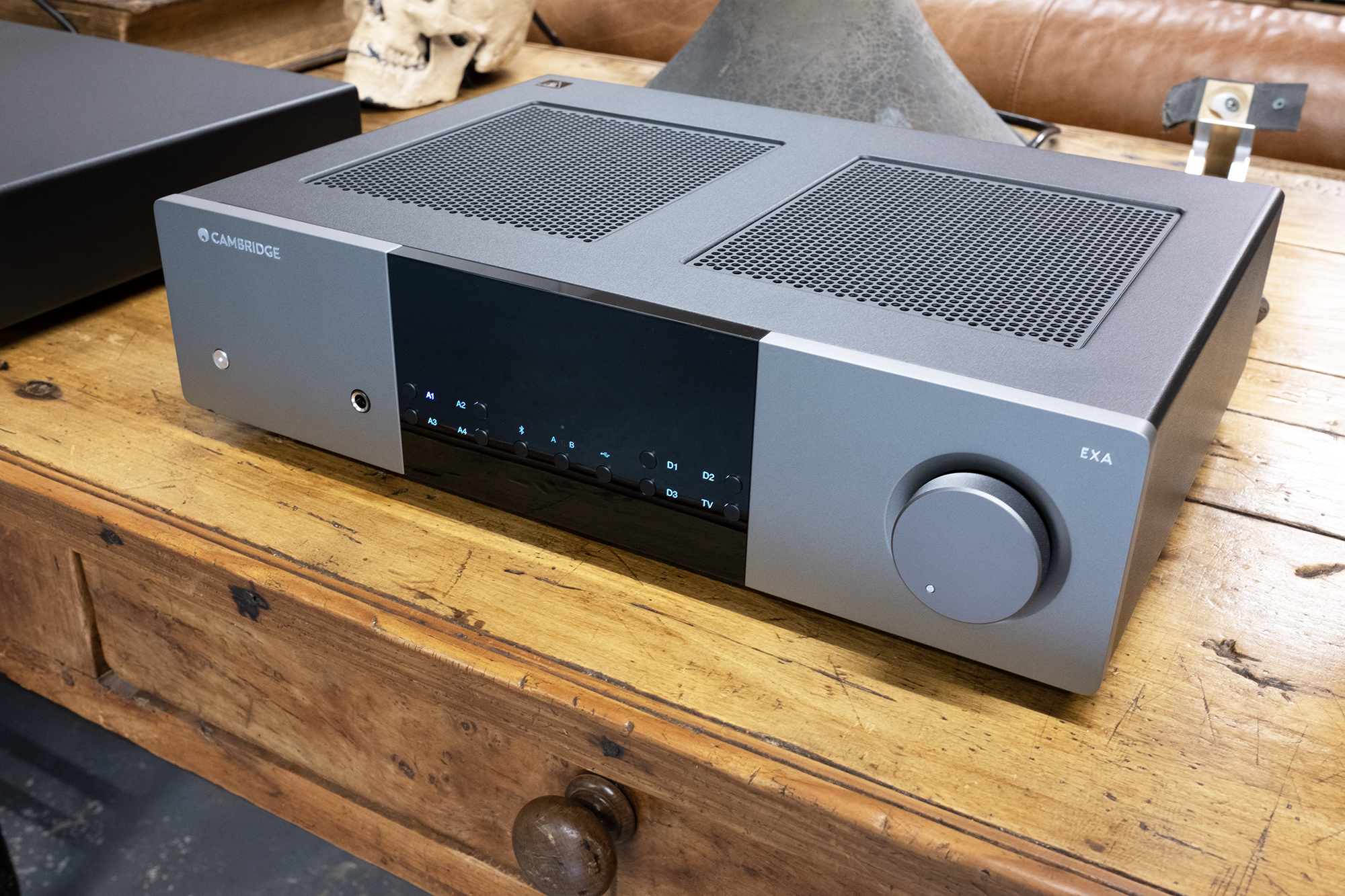
The EXA100 integrated amp has a DAC inside, based on the ES9018K2M DAC, with 5 digital inputs (HDMI eARC, 2x TOSLINK, Coaxial & USB). Why get the EXN100 seeing as the EXA100 has its own DAC? For the former’s streaming capabilities, features, and to ideally up the sound quality ante.

The EXA100 offers a total of 4 analog inputs (3x unbalanced RCA, 1x balanced XLR), a Pre Out, Sub Out, a pair of RCA’s to run the EXA100 in Power Amp Mode for use with an external preamp (or with the EXN100), Control Bus for controlling the EXN100 with the same (included) remote, Trigger In/Out for use with like-equipped devices, and 2-position Signal Ground switch if you encounter hum from a connected device, and two sets of speaker terminals, A + B. You can also connect to the EXA100 via Bluetooth.
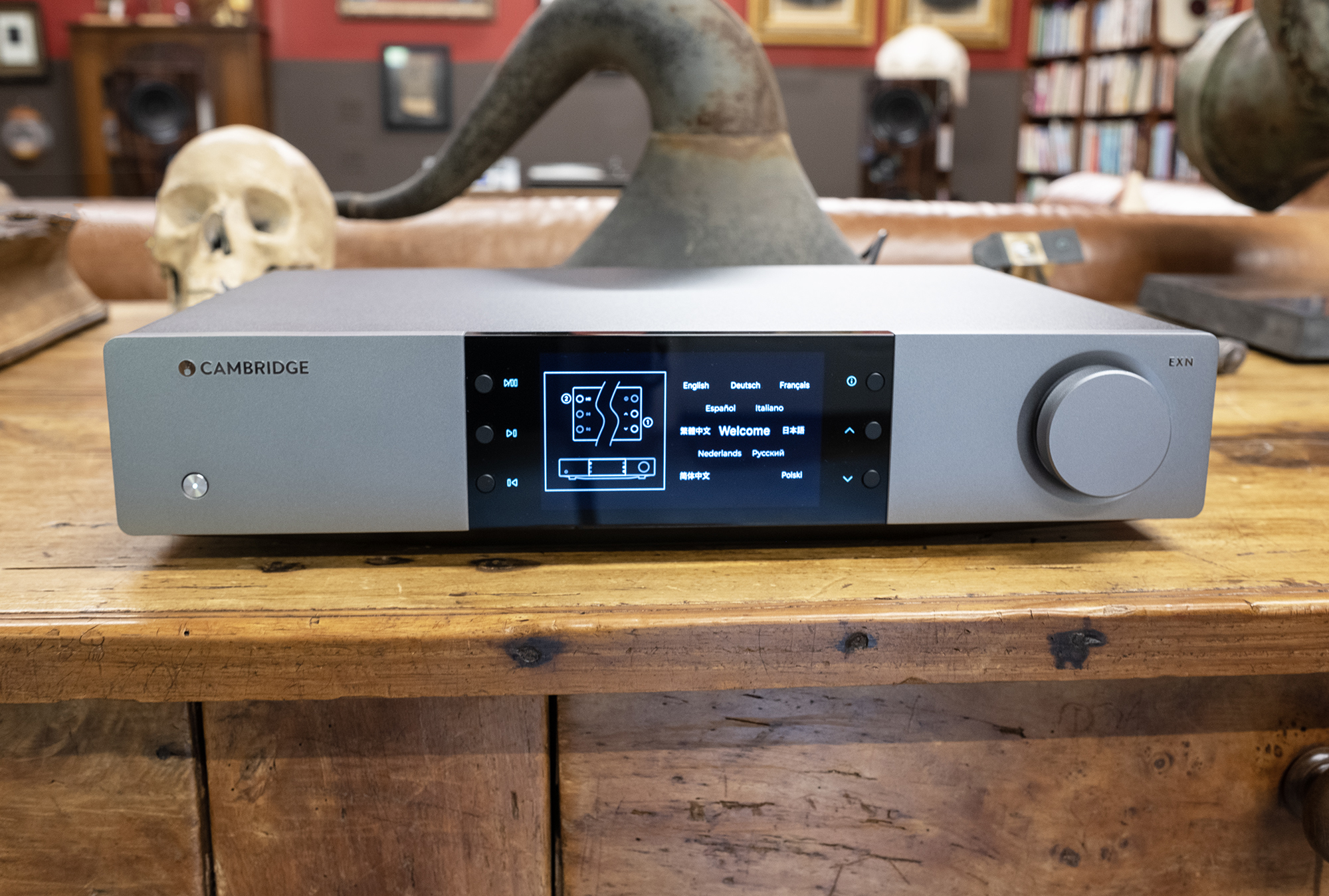
The EXN100 Network Player is a full featured streaming DAC built around Cambridge’s StreamMagic Gen 4 platform that supports Roon, Google Home, and Apple AirPlay with direct access to Spotify Connect, TIDAL Connect, Deezer, Qobuz, and Internet Radio. The ESS ES9028Q2M DAC handles D to A conversion while the nicely sized 4.76″ TFT screen lets you see what’s playing in living color.
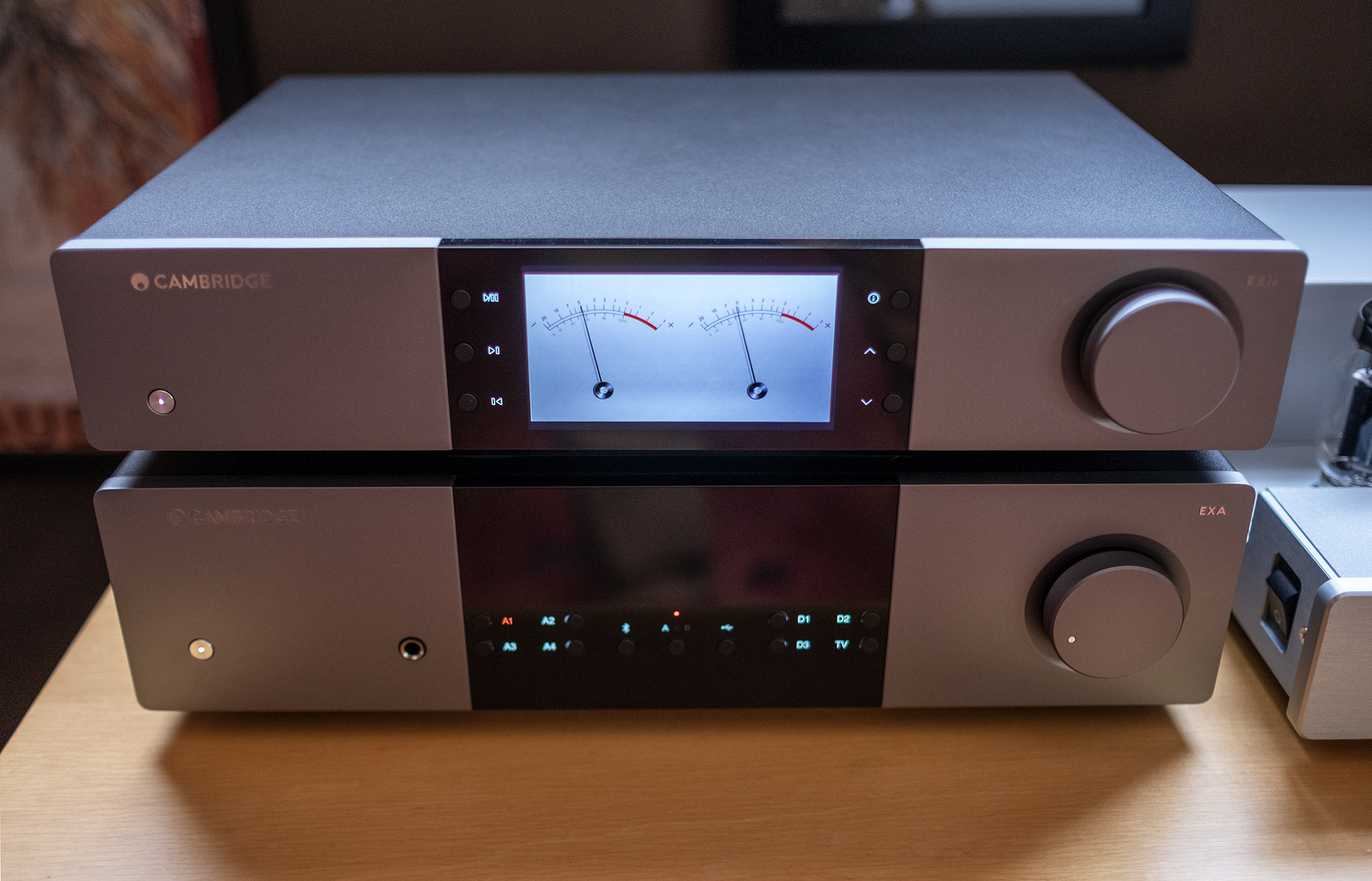
Or meters (or a digital clock but I hate being reminded of time when listening to music) with a press of the Info button on either the remote or front panel. Who doesn’t love meters?
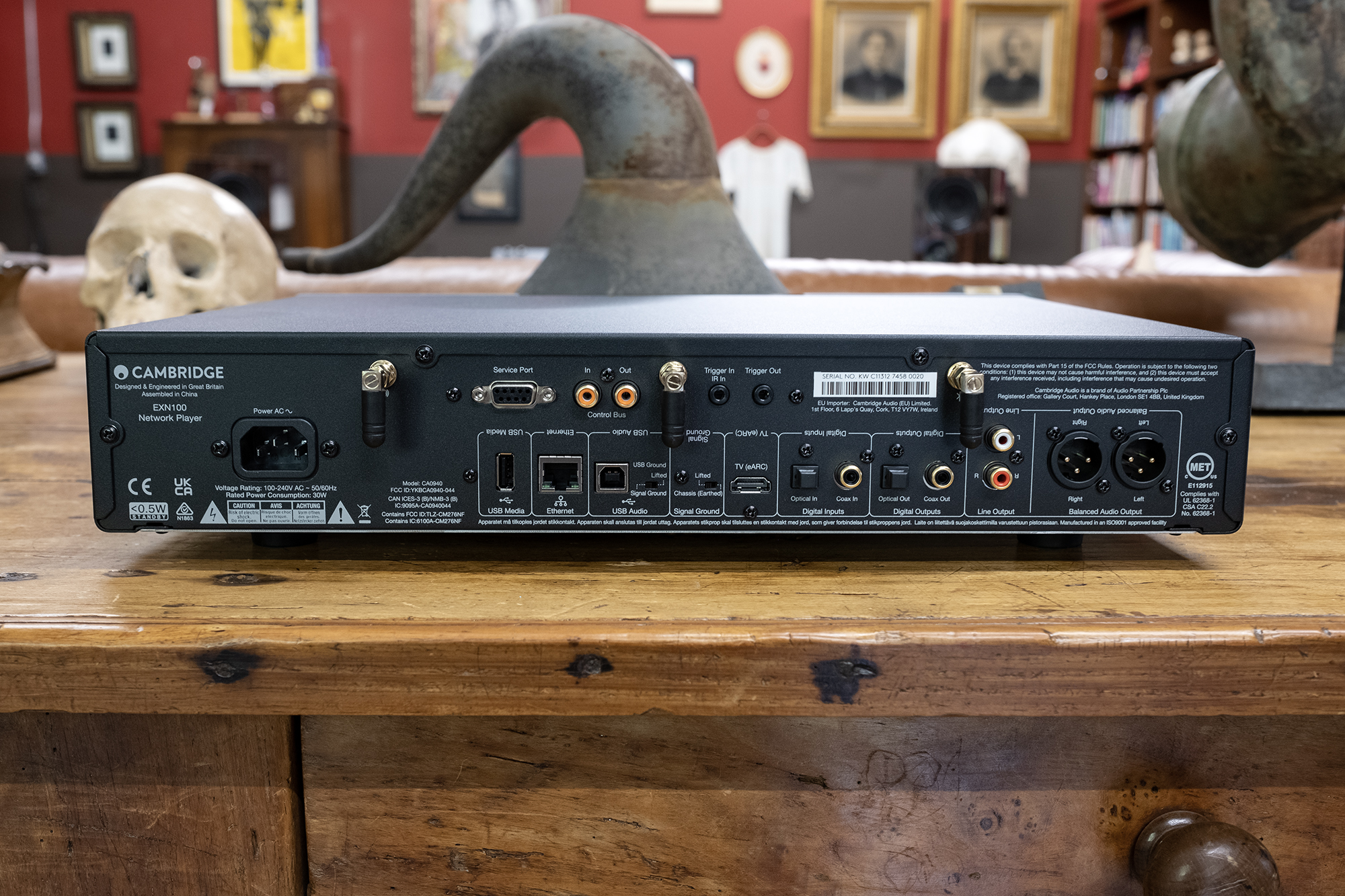
In addition to Ethernet and WiFi, the EXN100 also offers USB, HDMI eARC, TOSLINK optical and S/PDIF digital inputs joined by single-ended RCA and balanced XLR outputs. There are also 2 digital outputs (Coax and TOSLINK), an unbalanced RCA line out “(fixed or variable) used to provide a signal to another amplifier or a recording device”, a USB Type-A input for attaching USB storage, Trigger In/Out, and matching Control Bus RCA sockets as found on the EXA100. In addition to wires, you can connect to the EXN100 via Chromecast, Bluetooth, and AirPlay2. The EXN100 can also act as a digital preamp with the tick of an option in the StreamMagic app.
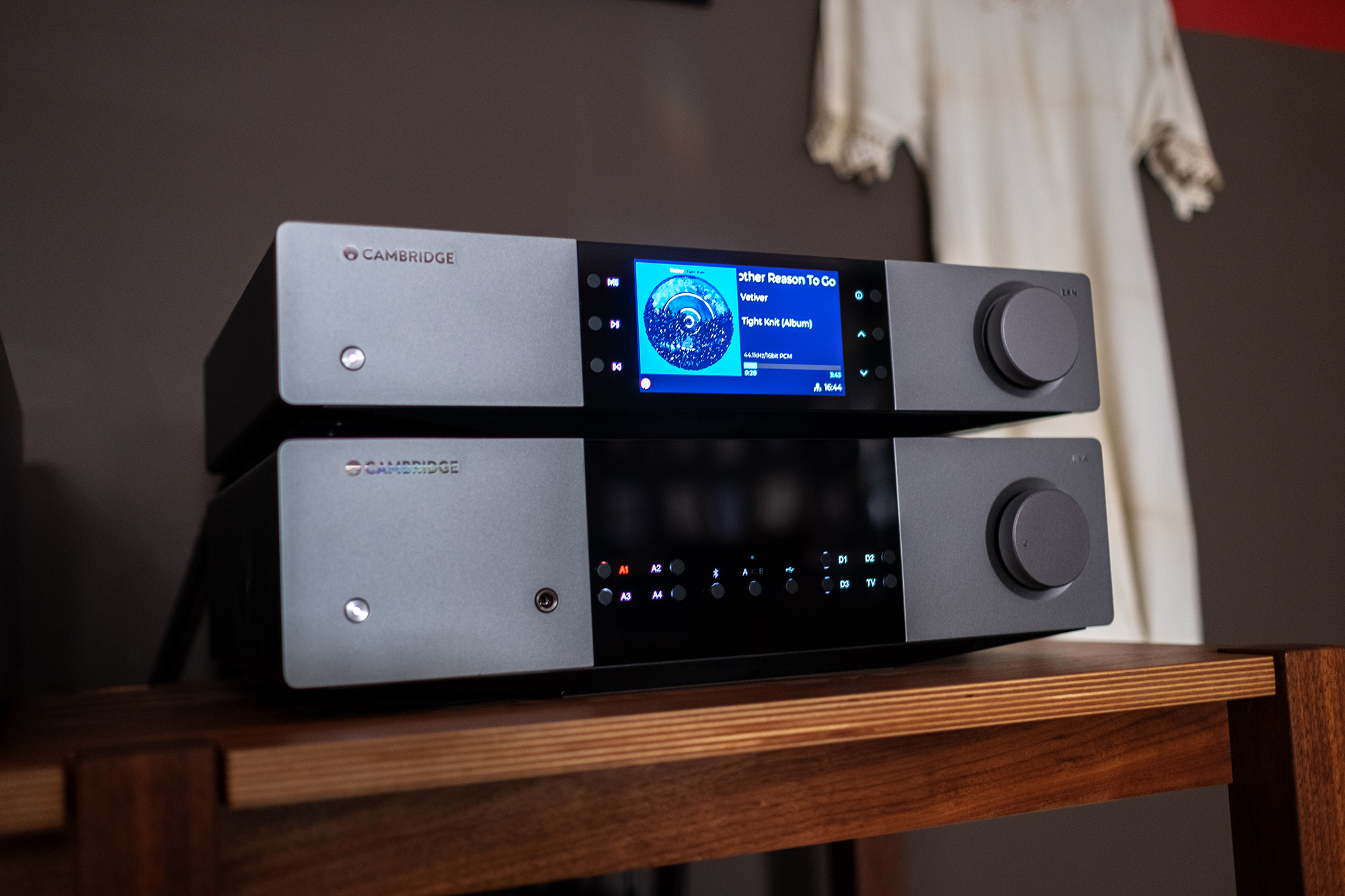
In terms of looks, fit ’n finish, the EX stack doesn’t measure up to the sexy curves found in the Edge Series but the EXA100’s 28+ lbs feels reassuring and the pair certainly look smart stacked on the rack. I ran them together as a stack throughout most of the review period where they were paired with the recently reviewed Vienna Acoustics Limited Edition Bach Ultimates (review), Dynaudio Contour Legacy Limited Editions (review), and the Barn resident DeVore Fidelity O/96 (review). All cabling came courtesy of AudioQuest (see full Barn and system details).

I ran the EX stack in both modes—with the EXA100 controlling volume and also with it set to Power Amp Mode using the EXN100 to control volume. I preferred the latter largely for convenience sake as it allows for in-app volume control but I found the EXA100’s volume control to be a touch more transparent but the difference was subtle, the kind of subtle that added up to convenience winning out. I used Roon throughout as it’s my app of choice. That said the StreamMagic app is very easy to use and like and I did take it for a short run around the block. While the included remote allows you to do many more things than I typically do, I preferred interacting with the EX gear’s hardware controls or via software—Roon and/or the StreamMagic app.
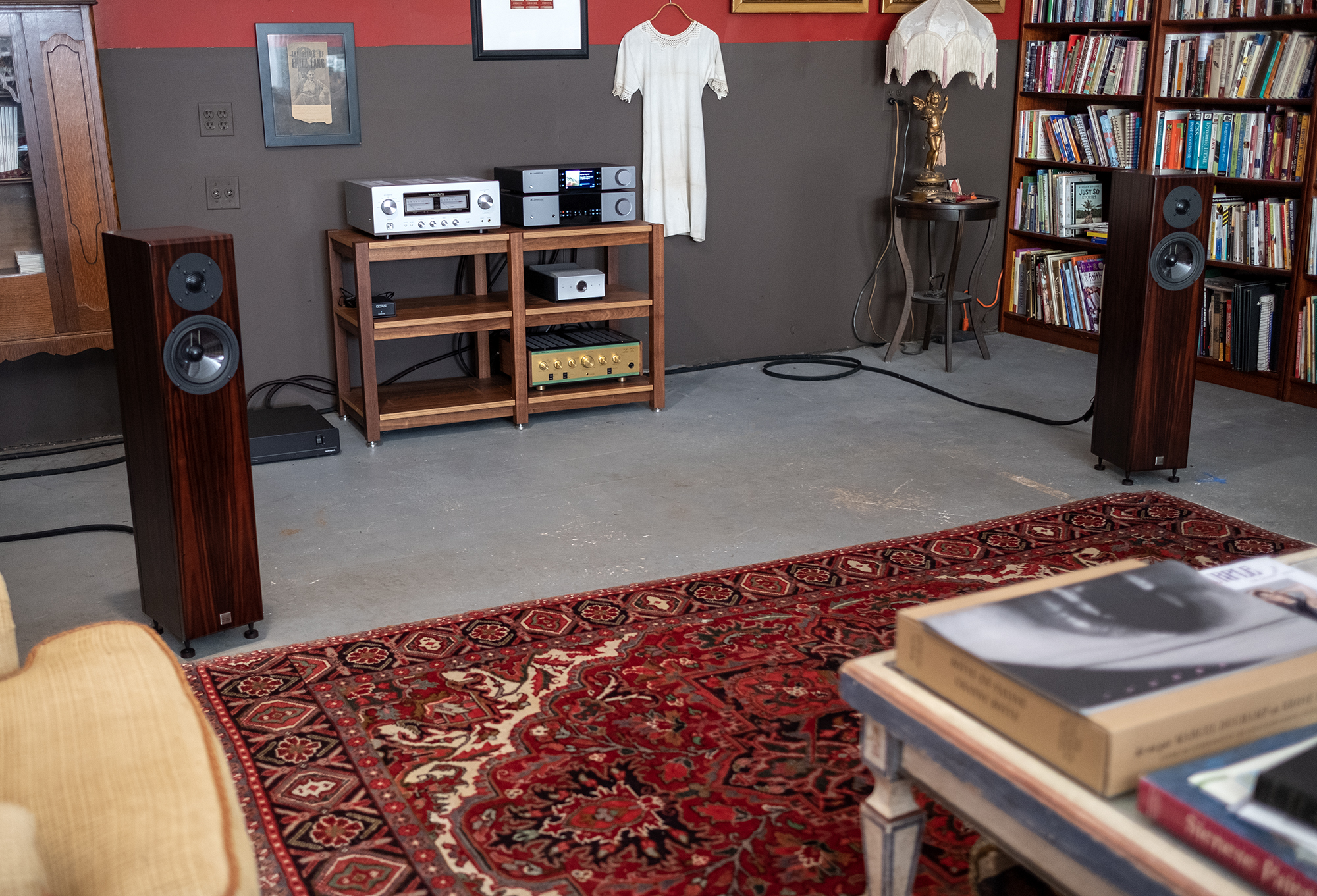
I will admit that I did not read the manual before digging in to listen to the EX stack and it took me some time to figure out that the input marked A1 on the EXA100’s front panel is used for the RCA and XLR output with a simple press & hold to select XLR. Yes I cursed but only once at myself before I figured out that simple solution to no sound.
Laura Marling’s latest Patterns In Repeat, released on Partisan Records last month, is a superb sounding record, another quiet singer-songwriter gem. The Cambridge EX stack delivered this relatively simple acoustic music with a very nice voice that felt finely detailed and nicely resolved. Think crystal clarity. When the strings come in on Track 4 “No One’s Gonna Love You Like I Can,” it was readily apparent that the Cambridge EX stack also did a very nice job with the various tones and textures of each instrument with Marling’s close mic’d vocals standing out front solidly in space. Certainly on this very well recorded album, the Cambridge EX stack was more than up to the task of reproducing every nook and cranny without ever feeling surgical. A nice balance.
King Hannah’s 2024 release Big Swimmer finds the Liverpool duo of singer Hannah Merrick and guitarist Craig Whittle in a kind of ZZ Top meets Dry Cleaning mode. Which is all right by me. Merrick’s vocals run from laconic conversational to soaring harmonies with Whittle’s guitar going from acoustic to electric overload and the EX stack pulled out a compellingly present and weighty rendition. There’s a sweetness to the Cambridge EXA100’s way with amplification that certainly brings to mind their more costly Edge cousins, the kind of sweetness that’s dark and rich like the high cocoa content stuff as opposed to the shallow thin plastic Hershey version (sometimes sweet means slow when it comes to amplification which is not the case with the EXA100). The Cambridge EX stack also got the rougher parts of Big Swimmer right with plenty of slam and weight where called for.
James Leyland Kirby as The Stranger’s 2013 release Watching Dead Empires in Decay builds sonic cities from electronic rubble sounding fierce and menacing with deep bass forming the subterranean foundation.
From the liner notes:
It’s complex, singular, enigmatic, percussive, dark, and you just can’t work out how it was constructed. Gone are the sampled 78’s of The Caretaker, but it also doesn’t exactly sound electronic – you just can’t quite fathom how any of it was put together: Field Recordings? Found Sounds? Sheets of metal scraped and hammered? Drum machines re-wired? It’s stark and unsettling, haunted, even troubling – but often just beautiful.
Space is the place on Watching Dead Empires and the vaster the better. The Cambridge EX stack pumping this energy through the Dynaudio Contour Legacy created a Barn-sized sound image that felt as if I could drive around inside all night long (I don’t think there’s any daylight to be found in this Dead Empire). Deep, physical bass was reproduced with weight, tone, and precision adding to the otherworldly feel created by Kirby like some master Brutalist builder in sound. To my way of hearing, this is a deeply rich record and the Cambridge EX stack reproduced a deeply rich version in Barn. Nice.
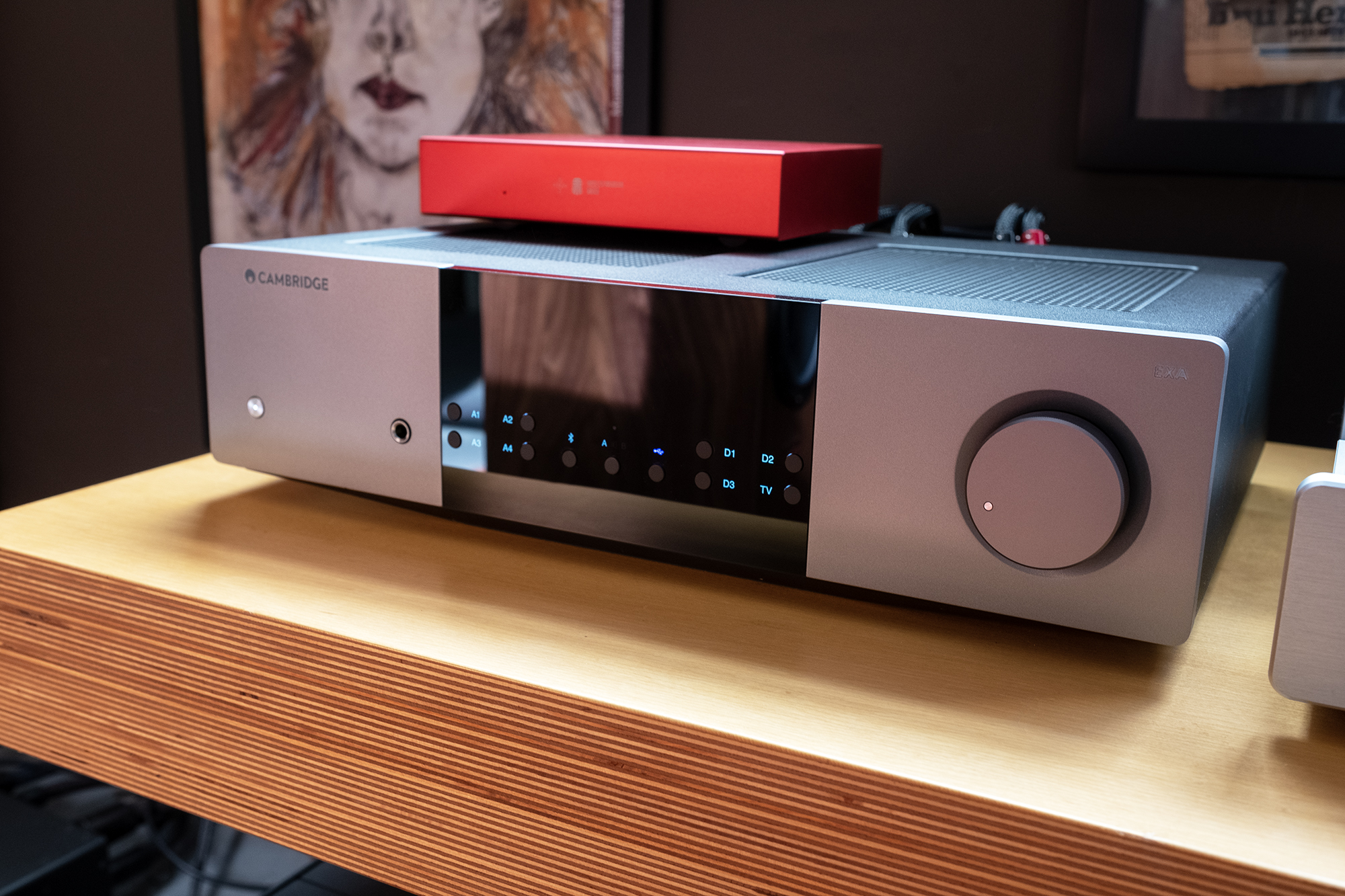
Seeing as the EXA100 has its own DAC, I used the review sample, and overachieving, Holo Audio Red Network Streamer/DDC (more info) to act as a Roon endpoint sending out USB audio over a length of AudioQuest Carbon to the EXA100’s USB input. While this combo won’t win any beauty awards as a couple, they certainly made beautiful music together. What we’re giving up is mostly obvious—Cambridge’s StreamMagic app, its in-app volume control, and color screen but what we gain is to my ears a more refined and weightier sound. Music, all music, jumped to life to a greater degree with more sparkle, vividness, and body as compared to the Cambridge EX stack combo.
I will say that my limited experience with Holo Audio, specifically their KTE May DAC I reviewed way back in 2020 (review), suggests they they specialize in very well made and very well performing (and measuring according to John Atkinson at Stereophile) gear that’s priced on the right side of nice. All to say that on a purely sonic level, I preferred the admittedly less matchy-matchy Holo Red / Cambridge EXA100 pairing to the Cambridge EX stack. When added up and coupled with my experience of the Edge A integrated amp, I conclude I like the sound of Cambridge Audio’s amps more than their streamers. If I were to pick and choose. I did not try any external DACs with the EXA100 because I don’t see the point in paying for a feature that you plan to ignore, especially one that performs to the level of the EXA’s DAC when paired with the Holo Red.
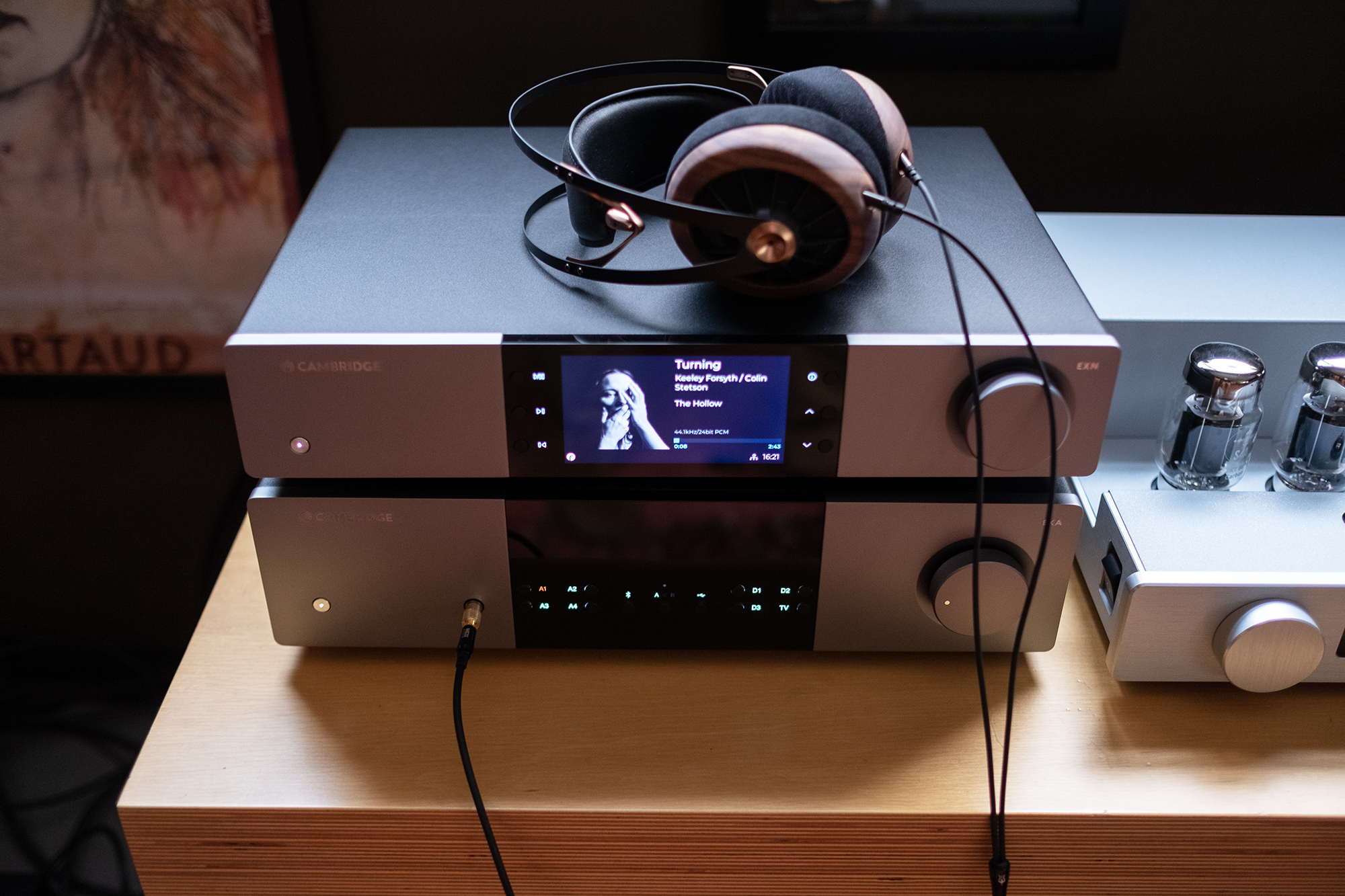
Regular readers know of my infrequent, at best, time spent listening through headphones but the Cambridge EX stack mated to the Meze Audio 109 Pros made magic with Keeley Forsyth’s 2024 album The Hollow, one of the most magical albums of the year (so far). Alchemical saxophonist Colin Stetson joins Forsyth on “Turning” and the combination was scintillating, yes positively scintillating, through the Meze 109 Pros. That same rich sweetness coupled with crystal clarity I heard through loudspeakers was equally enticing up close and personal.
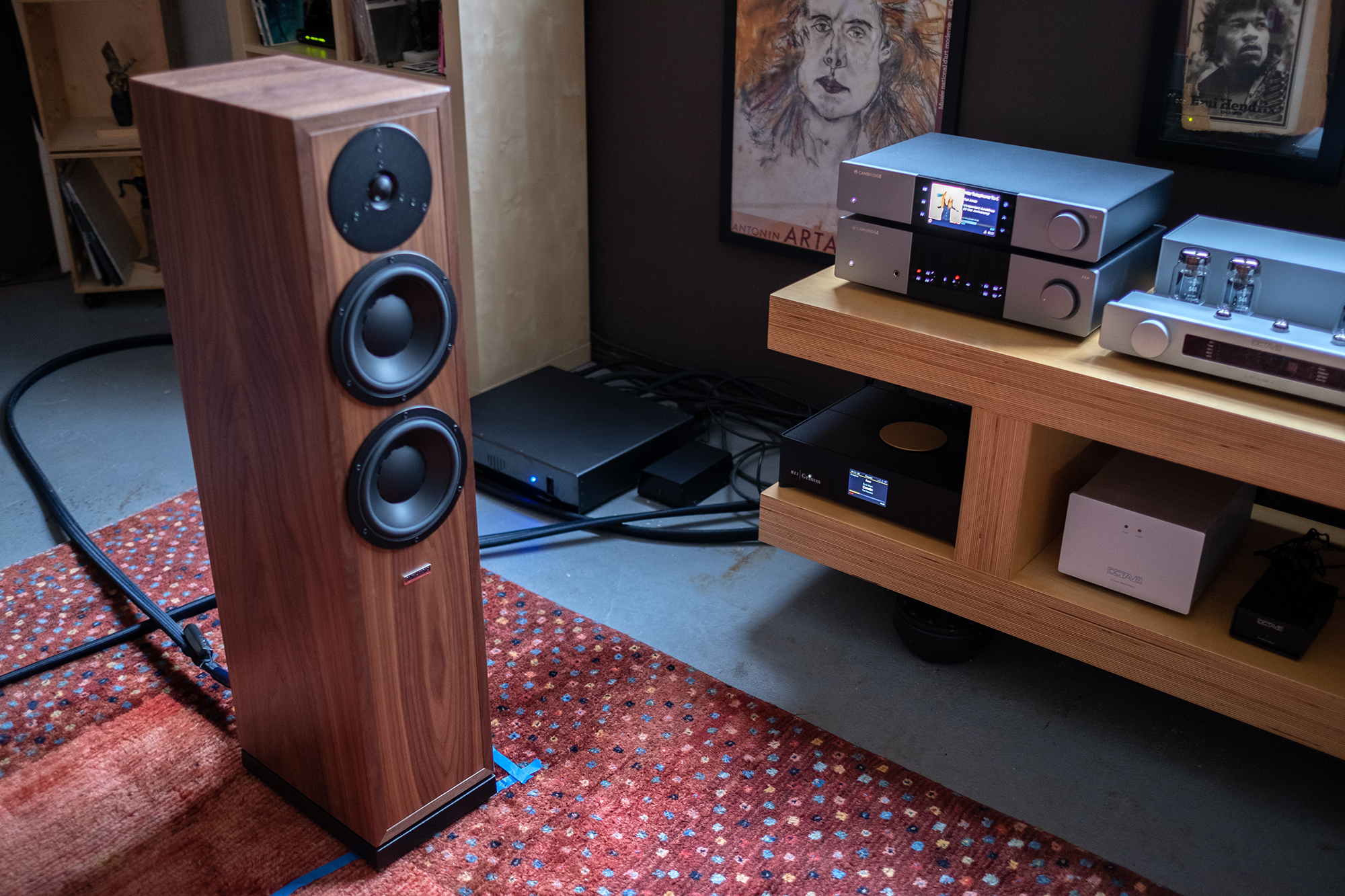
Of the speaker pairings available in Barn during the Cambridge EX stack’s stay, my favorite was the Dynaudio Contour Legacy as their rich coherent manner enjoyed the EXA’s juicy power. In second place was the Vienna Bach Ultimates followed by the DeVore O/96. While I don’t imagine many, or any, O/96 owners would consider a $2000 and change solid state integrated as a life-long O/96 partner, I run every amp that comes through the DeVores because they’re the speakers I know best and you may have guessed, the Cambridge/DeVore combo did not bring out the best in either. A hifi is, after all is said and argued over, a system working together to create music rather than a group of individual players all shouting out their respective spec sheets at the same time.
Settling back into the Cambridge EX stack/Dynaudio system, I ran through loads of test tracks and smiled over and over at the enjoyment to cost ratio. To my mind, the Cambridge EXA100 integrated amp/DAC and Edge A integrated are sweet spots in the Cambridge line and are very worthy of consideration. If you like the convenience, features, and looks of the EX stack, the pair offers a lot of features, fun, and sonic joy for the money.
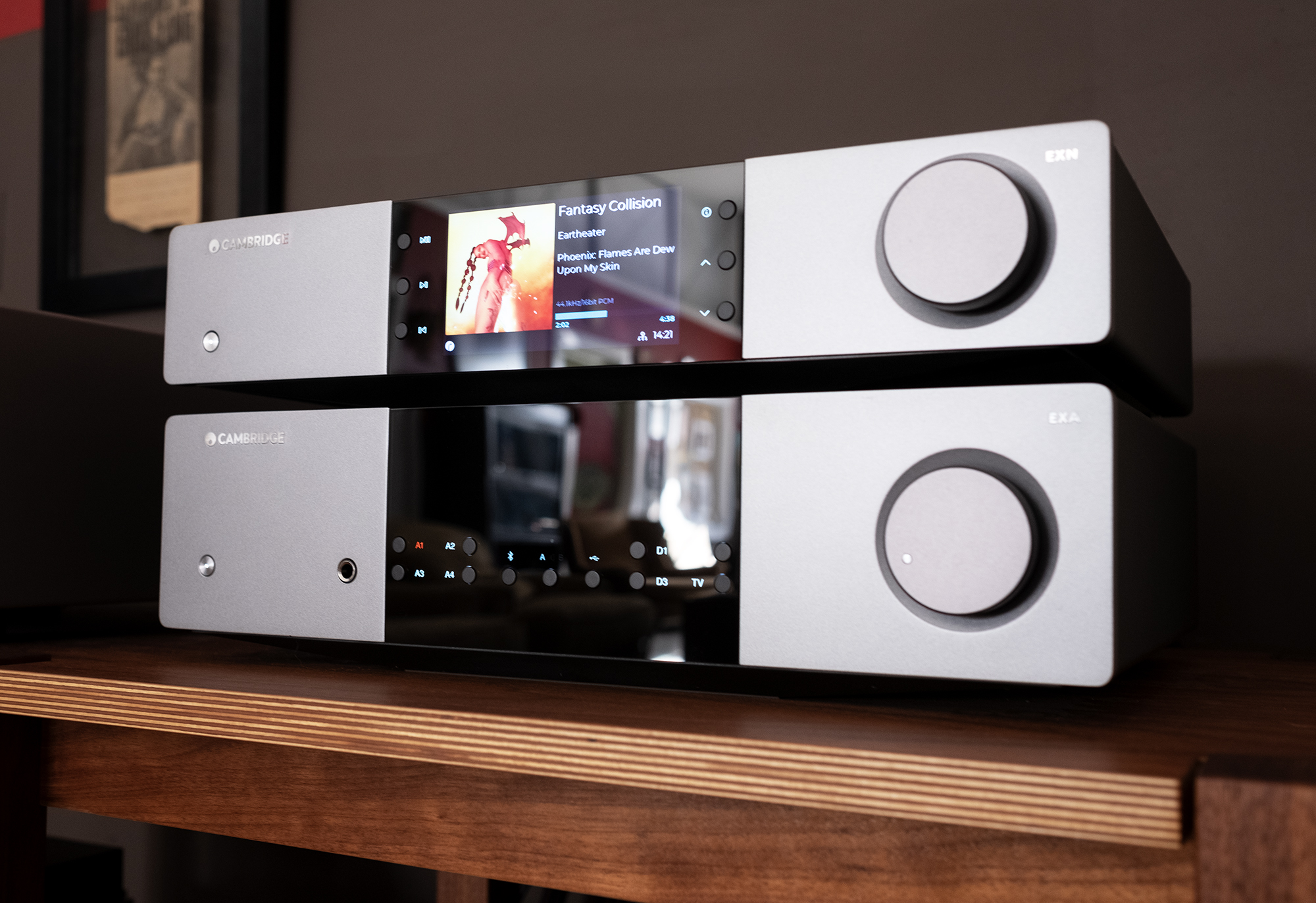
I’ve been not so quietly impressed with the Cambridge Audio Edge gear I’ve reviewed and I am very happy to say that the new EXN100 Network Player and EXA100 Integrated Amplifier continue that tradition. When you add everything up—features, fit ’n feel, price and performance—you can expect to be wearing a similar smile when bathing in its owner-friendly enjoyment to cost ratio.
Cambridge Audio EXN100 Music Streamer
Price: $1799
Cambridge Audio EXA100 Stereo Integrated Amplifier
Price: $2199
Company Website: Cambridge Audio
